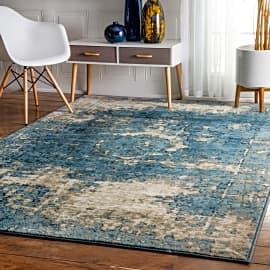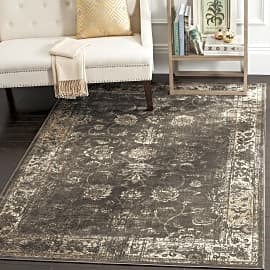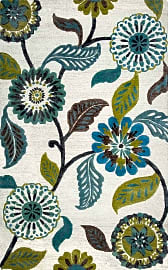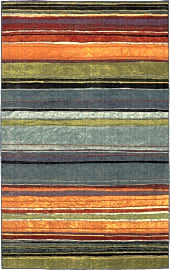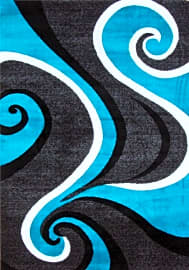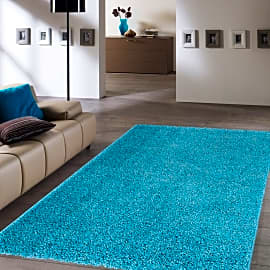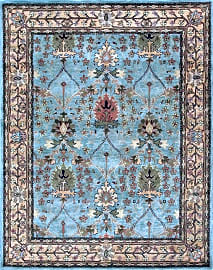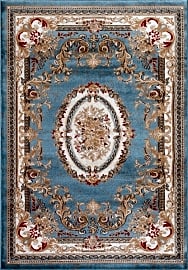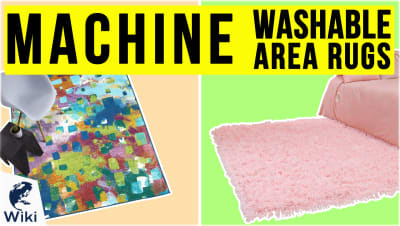The 10 Best Area Rugs

This wiki has been updated 38 times since it was first published in June of 2015. What's the fastest and easiest way to change the look and feel of any space? Change the color and texture of the flooring, of course. Whatever your budget, and no matter your style preference — modern, classic, vintage, or antique — you'll find the perfect area rug to brighten up your home or workplace from our varied selection, ranked here by appearance, durability, and weave quality. When users buy our independently chosen editorial selections, we may earn commissions to help fund the Wiki.
Editor's Notes
March 19, 2020:
We had to say goodbye to one of the two EORC models from our previous list, both for availability issues and because it fell between two acceptable states for most of the offerings in this category: soft or durable. Many tightly woven rugs lack the kind of plush feel you get by loosening things up a bit and focusing on pile height and experimenting a bit with material composition. The upside to these tighter rugs is that they tend to be a lot more durable — often thanks to the use of machine looming — even if they aren't as enjoyable to lie on or even walk on barefoot. The bygone EORC turned out to be neither soft nor durable, though it took time for the latter fact to make itself known.
In its place, we included another model with a floral pattern in the Rizzy Home Sage, which strikes a much better balance between durability and comfort, and that is available in a whole host of sizes and patterns should the enlarged nature design not meet your needs. Ultimately, it seems shag is still very much having its moment back in the sun with models like the Safavieh California Shag and the Ottomanson Cozy Contemporary, though it is an admittedly tamer variety of shag than the fluffy messes associated with the interior of 1970s conversion vans.
Surprising Benefits Of Having An Area Rug
To that point, rugs around the home can also stop the adult chit chat from waking a sleeping toddler.
Since we literally walk over area rugs, we may not really take a moment to appreciate these items. In addition to being attractive, they offer several practical benefits to a room. If there's too much noise bouncing around in your home or office, you may find that adding area rugs throughout can keep things a bit quieter. Hard floors do a poor job of absorbing sound. Soft materials, on the other hand, will absorb some of those sound waves, helping to keep noise from being a nuisance or interfering with your tasks. Parents of younger, rowdier children will certainly appreciate this tip since kiddos are rarely quiet unless they're asleep. To that point, rugs around the home can also stop the adult chit chat from waking a sleeping toddler.
Area rugs can also keep a home warmer. Hardwood floors allow cold air to seep in through the cracks, and tile floors can get almost frigid in chilly environments. Adding rugs throughout your house can better insulate the space, keeping cold air out and trapping your precious heat in, as well as providing you with a warm surface to walk on. Regardless of whether you use central climate control or space heaters, all methods to warm the home are pricey, so you can never have too many ways to cut costs on those energy bills.
Soft floors are easier on everyone's joints, from adults to crawling babies, and even playful pets. You may notice that you don't mind standing at the kitchen sink doing dishes quite as much when you can stand over a cushioned surface. And if you have a little offspring in the home who hasn't quite learned how to walk, you can give his poor knees and elbows some relief by adding area rugs. As for the four-legged companions, think about the fact that they spend most of the day lying on the floor. It'll be better for their bodies to have a bit of cushioning, and hardwood or tile just doesn't provide that.
Area Rugs Versus Carpets
If you are thinking about adorning your home with area rugs, you may find yourself wondering why you shouldn't just cover all of your floors with carpeting. But area rugs provide quite a few perks that carpets simply don't. First off, you cannot really use carpet to enhance the appearance of a room. Because carpet is wall to wall, stationary, and typically a solid color, it acts more as a backdrop than a statement item. Carpet disappears in the background, while area rugs can be moved around, and are available with all sorts of gorgeous designs on them. These last two features are what make them an important part of feng shui. You can play with a rug's location, and select colors and graphics, to do a variety of things from making a room look larger to making a space feel more welcoming.
The second important advantage of rugs over carpets it that you can take rugs outside while you clean them.
The second important advantage of rugs over carpets it that you can take rugs outside while you clean them. Whether you choose to shampoo them or a run a spot cleaner over them, you can do this outdoors, rather than inside. This is good for several reasons. If you have pets or small children, you don't want them accidentally eating the cleaning product you leave on the floor, which can easily occur with carpets because you can't remove them from your house while they dry. If you're using a vacuum, the noise may bother your family, or even terrify your dogs and cats. Luckily, you can just take the rug outdoors, and make these loud sounds away from the home.
Finally, the beauty of area rugs is that, when you tire of them, you can simply roll them up, and tuck them away to make room for new ones. Meanwhile, replacing carpeting is a huge hassle. It can take days, and cost you a lot of money. Furthermore, maybe you like the hardwood or tile floors beneath your rugs and want the option to show them off from time to time. You just can't do that when you cover them with carpets.
Choosing The Right Rug Material
Now that you've decided to add some area rugs to your home, it's time to talk about the material. There are so many to choose from, and the best one for you will depend on your home, style, and habits. Let's start with wool. This is obviously one of the warmest fabrics and ideal for houses in cold climates. It's very durable, and can certainly survive high-traffic areas without showing much wear and tear. Plus, wool is naturally stain-resistant. That being said, it can absorb moisture and lose its color in the sun, so it's not good for patios, decks, or rooms with a lot of windows. If you get a wool rug, you'll definitely need to keep it indoors.
Synthetic rugs are also quite soft to the touch, so if you like to walk around barefoot, they could be right for you.
Next, let's discuss natural fibers and cotton, which are loosely in the same category. Cotton rugs are obviously ideal choices for homes in which the residents have allergies. They're very easy to clean, and typically machine washable. It's also easy to find cotton rugs in rather flat weaves, which makes them a good choice for anyone concerned with tripping, and practical options for hallway runners. Meanwhile, if you turn towards eco-friendly materials like sisal and jute, you'll find some visually stunning options, but they're generally rather rough to the touch. They do offer the benefit of being being gentle on the environment and durable though.
If you decide to go with synthetic fibers like Polypropylene, you'll find that these are good for indoor or outdoor spaces. They're usually treated to be stain, water, and UV-resistant, making them ideal for households with kids. These are typically on the more affordable end, too, so if you need a lot of area rugs to cover entryways, hallways, dining areas, and more, they could be cost-effective. Synthetic rugs are also quite soft to the touch, so if you like to walk around barefoot, they could be right for you.


